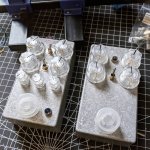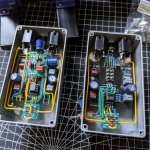junderwood
Active member
After getting a little help over in the General Questions forum I finished up this awesome pair of Tommy III's. I routed the internal symmetric/asymmetric switch to the outside on both and also added a Rullywow Serpent Boost to one of them just for something a little different. These things sound excellent, and were a ton of fun to build. These were my first two DIY pedals but certainly won't be my last 



